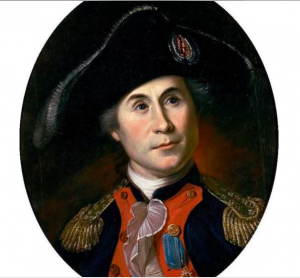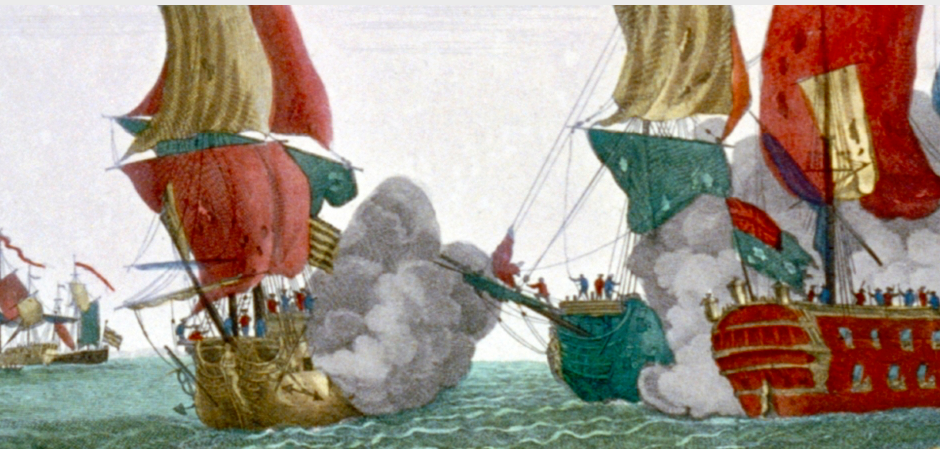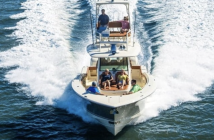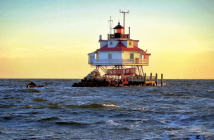 At 6 p.m. on Sept. 23, 1779, John Paul Jones, now known as “the father of the American Navy” and then the captain of the 900-ton, 42-gun converted merchant ship Bonhomme Richard, opened fire on a more heavily armed British warship about five miles off the coast of Flamborough Head, Yorkshire, England. In the middle of the battle, after half the men on both ships had been killed, the English captain asked Jones if he wished to surrender. Jones’ reply, which lives to this day, was, “Sir, I have not yet begun to fight.” Indeed, at 10:30 that night it was the British who surrendered. The only problem was that the Bonhomme Richard was on fire and leaking badly; it sank 36 hours later.
At 6 p.m. on Sept. 23, 1779, John Paul Jones, now known as “the father of the American Navy” and then the captain of the 900-ton, 42-gun converted merchant ship Bonhomme Richard, opened fire on a more heavily armed British warship about five miles off the coast of Flamborough Head, Yorkshire, England. In the middle of the battle, after half the men on both ships had been killed, the English captain asked Jones if he wished to surrender. Jones’ reply, which lives to this day, was, “Sir, I have not yet begun to fight.” Indeed, at 10:30 that night it was the British who surrendered. The only problem was that the Bonhomme Richard was on fire and leaking badly; it sank 36 hours later.
Now, a team of U.S. and British divers think they may have found the remains of the Bonhomme Richard. Working from the USNS Grasp, they have found the remains of a ship where they think Jones’ vessel sank; because of its depth and weather conditions, it may take some time to determine of those are actually the remains of the Bonhomme Richard.
Jones, a Scotsman who went to sea when he was 13 and commanded his own ship at 21, was regarded as a traitor and a pirate by the British, while he remains a hero of the Revolution to Americans. He joined the Continental Navy early in the war, and became the first U.S. naval commander, charged with intercepting British ships off the coast of France and England. The French gave him the large merchant ship to help in this effort. He named it Bonhomme Richard in honor of his friend, Benjamin Franklin, who was the American Commissioner at Paris at the time. Franklin had just published “Poor Richard’s Almanac,” which became a best-seller in France under the title, “Les Maximes du Bonhomme Richard.”




